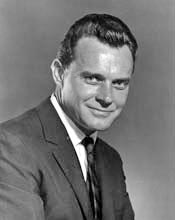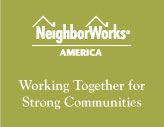Related Research Articles

The United States Department of Housing and Urban Development (HUD) is one of the executive departments of the U.S. federal government. It administers federal housing and urban development laws. It is headed by the Secretary of Housing and Urban Development, who reports directly to the President of the United States and is a member of the president's Cabinet.
The Community Development Block Grant (CDBG), one of the longest-running programs of the U.S. Department of Housing and Urban Development, funds local community development activities with the stated goal of providing affordable housing, anti-poverty programs, and infrastructure development. CDBG, like other block grant programs, differ from categorical grants, made for specific purposes, in that they are subject to less federal oversight and are largely used at the discretion of the state and local governments and their subgrantees.

Roberta Achtenberg is an American attorney and civil rights advocate who served as a commissioner on the United States Commission on Civil Rights. She was previously assistant secretary of the U.S. Department of Housing and Urban Development, becoming the first openly lesbian or gay public official in the United States whose appointment to a federal position was confirmed by the United States Senate. This confirmation hearing garnered a lot of publicity, opposition, and support.

George William Miller was an American businessman and investment banker who served as the 65th United States secretary of the treasury from 1979 to 1981. A member of the Democratic Party, he also served as the 11th chairman of the Federal Reserve from 1978 to 1979. Miller was the first person to hold both of those posts.

James Thomas Lynn was an American cabinet officer and government official. He served as the Secretary of Housing and Urban Development from 1973 until 1975 and as the director of the Office of Management and Budget from 1975 until 1977.

The Community Reinvestment Act is a United States federal law designed to encourage commercial banks and savings associations to help meet the needs of borrowers in all segments of their communities, including low- and moderate-income neighborhoods. Congress passed the Act in 1977 to reduce discriminatory credit practices against low-income neighborhoods, a practice known as redlining.
A community development financial institution (US) or community development finance institution (UK) - abbreviated in both cases to CDFI - is a financial institution that provides credit and financial services to underserved markets and populations, primarily in the USA but also in the UK. A CDFI may be a community development bank, a community development credit union (CDCU), a community development loan fund (CDLF), a community development venture capital fund (CDVC), a microenterprise development loan fund, or a community development corporation.

The Urban Institute is a Washington, D.C.–based think tank that conducts economic and social policy research to "open minds, shape decisions, and offer solutions". The institute receives funding from government contracts, foundations, and private donors.
The Surdna Foundation was established as a charitable foundation in 1917 by John Emory Andrus to pursue a range of philanthropic purposes.
Tahrunessa Ahmed Abdullah is a Bangladeshi writer and activist. She is notable for her researches and contribution to an uplift in the lives of women in rural Bangladesh through her various levels of involvement with Bangladesh Academy for Rural Development. In 1978, she became the first Bangladeshi to receive the Ramon Magsaysay Award in the community leadership category.

Benjamin Bentley Blackburn is a former U.S. Representative from Georgia who served from 1967 to 1975.
Planning and development in Detroit since the late 20th century has attempted to enhance the economy and quality of life of Detroit, Michigan, United States. In 1970, the private group Detroit Renaissance began to facilitate development in the city. Its successor, Business Leaders for Michigan, has continued to facilitate development into the 21st century. Projects have included new commercial facilities, revitalization of neighborhoods, hospitality infrastructure, and improvements to recreational and public facilities, such as the QLine light rail project.

Xavier de Souza Briggs is an American educator, social scientist, and policy expert, known for his work on economic opportunity, social capital, democratic governance, and leading social change. He has influenced housing and urban policy in the United States, contributing to the concept of the "geography of opportunity," which examines the consequences of housing segregation, by race or economic status, for the well-being and life prospects of children and families. He is a former member of the Harvard and MIT faculties, currently a senior fellow of the Brookings Institution. He is an elected fellow of the National Academy of Public Administration.

Edward Joseph Logue was an American urban planner and public administrator who worked in New Haven, Boston, and New York State. Commentators often compare Logue with Robert Moses - both were advocates of large-scale urban renewal in the United States from the 1950s through the 1970s.
Women in Housing and Finance (WHF) is a membership organization of professionals in the area of housing and finance located in the greater metropolitan area of New York City. Founded in 1981, WHF promotes and supports the professional growth of women in housing, finance and development and provides a vehicle through which members share knowledge and experience.

The National Community Stabilization Trust is a Washington, D.C.-based non-profit organization that facilitates the transfer of foreclosed and abandoned properties from financial institutions nationwide to local housing organizations to promote property reuse and neighborhood stability. According to U.S. Banker, the Stabilization Trust was "created to act as a middleman between cities looking to acquire abandoned properties and the lenders looking to unload them."

The Neighborhood Reinvestment Corporation, doing business as NeighborWorks America, is a congressionally chartered nonprofit organization that supports community development in the United States and Puerto Rico. The organization provides grants and technical assistance to more than 240 community development organizations. NeighborWorks America provides training for housing and community development professionals through its national training institutes. Since 2007, NeighborWorks America has administered the Congressionally created National Foreclosure Mitigation Counseling Program.

The Local Initiatives Support Corporation (LISC) is a US non-profit community development financial institution (CDFI) that supports community development initiatives across the country. It has offices in nearly 40 cities and works across 2,100 rural counties in 44 states. LISC was created in 1979 by executives from the Ford Foundation. LISC's affiliates include the National Equity Fund (NEF), the largest national syndicator of Low Income Housing Tax Credits (LIHTC), the New Markets Support Company, a national syndicator of New Markets Tax Credits, and immito, which specializes in SBA 7a lending.

Capital Impact Partners, or simply Capital Impact, is a congressionally chartered, District of Columbia nonprofit and certified community development financial institution that provides credit and financial services to underserved markets and populations in the United States. S&P Global issued Capital Impact its first rating in 2017.
Housing and Community Development Act of 1992 was first introduced to the 102nd Congress on June 5, 1992, and was signed and made law by President George H. W. Bush on October 28, 1992. Also known as "The 1992 Act", the bill amended a number of housing, banking, and drug abuse laws. It amended The United States Housing Act of 1937. It increased aggregate budget authority for low-income housing for fiscal year 1993 and 1994. It also extends ceiling rents, excludes certain child care expenses, and excessive travel expenses from the calculation of adjusted income and apply to Indian public housing certain definitions of the Cranston-Gonzales National Affordable Housing Act; It allows the Secretary of Housing and Urban Development to issue public and Section 8 housing tenant preference rules. The Act also extends certain exemptions from waiting list requirements and eligibility restrictions with respect to income eligibility for assisted housing and while revising the family self-sufficiency program, with respect to escrow saving accounts, incentives for participation, and action plans.
References
- 1 2 3 Maturniak, Edward (1978-04-23). "Two firsts for villager". The Ridgewood News. p. 1.
- 1 2 3 Senate Committee on Banking, Housing and Urban Affairs, United States Congress (1978). Nomination of Anita Miller: Hearing Before the Committee on Banking, Housing, and Urban Affairs, United States Senate, Ninety-fifth Congress, Second Session, April 20, 1978. Washington: U.S. Government Printing Office.
- 1 2 3 Mayer, Martin (1978). The Builders: Houses, People, Neighborhoods, Governments, Money. W.W. Norton Co. pp. 138, 329, 330.
- 1 2 "Federal Home Loan Bank Board Nomination of Anita Miller To Be a Member". www.presidency.ucsb.edu. Retrieved 2022-03-11.
- 1 2 "Anita Miller Appointed to Bank Board". Federal Home Loan Bank Board Journal. 11 (5): 2. May 1978.
- ↑ Scroggin, Ben F. Jr. (September 1978). "The Federal Savings and Loan Advisory Council". Federal Home Loan Bank Board Journal. 11 (9): 21–23.
- ↑ "Anita Miller Named Acting Head of Bank Board". Federal Home Loan Bank Board Journal. 12 (7): 4. July 1979.
- ↑ "Janis Takes Office as New Bank Board Chairman". Federal Home Loan Bank Board Journal. 12 (10): 2–3. October 1979.
- ↑ "Anita Miller Resigns as Bank Board Member". Federal Home Loan Bank Board Journal. 12 (11): 6. November 1979.
- ↑ Dembart, Lee (October 6, 1977). "Carter Takes 'Sobering' Trip to South Bronx". The New York Times. p. 1. Retrieved May 18, 2022.
- ↑ Jonnes, Jill (2002). South Bronx Rising: The rise, fall, and resurrection of an American city. p. 378.
- ↑ Rosen, Ira (1979-10-07). "The Glory That Was Charlotte". The New York Times. Retrieved 2022-03-11.
- ↑ "A Visit to Charlotte Street | Adrian Shirk". Catapult. 2016-10-05. Retrieved 2022-05-18.
- ↑ Cruz, David (2020-12-16). "From Fiery Wasteland To City Suburbia: The Transformation Of Charlotte Street In The South Bronx". Gothamist. Retrieved 2022-03-11.
- ↑ Shenon, Philip (1983-03-19). "TASTE OF SUBURBIA ARRIVES IN THE SOUTH BRONX". The New York Times. ISSN 0362-4331 . Retrieved 2022-03-11.
- 1 2 Von Hoffman, Alexander (2003). House by House, Block by Block: The Rebirth of America's Urban Neighborhoods. Oxford University Press. pp. 36, 47.
- ↑ Goldman, John J., and Elizabeth Shogren (1997-12-11). "Key Ingredient in Bronx Rebirth: The Picket Fence". Los Angeles Times. Retrieved 2022-03-11.
{{cite news}}: CS1 maint: multiple names: authors list (link) - ↑ "President Clinton Visits the Bronx". clintonwhitehouse4.archives.gov. Retrieved 2022-03-11.
- ↑ "Greatest real estate turnaround ever - the South Bronx - Nov. 9, 2009". money.cnn.com. Retrieved 2022-03-11.
- ↑ Spilka, Gerri, and Tom Burns (1998). "Final Assessment Report: The Comprehensive Community Revitalization Program in the South Bronx". Archived from the original on 2009-03-29. Retrieved 2022-03-11.
{{cite web}}: CS1 maint: multiple names: authors list (link) - ↑ Miller, Anita, and Tom Burns (2006). Going Comprehensive: An Initiative that Worked / CCRP in the South Bronx (PDF). Philadelphia: OMG Center for Collaborative Learning.
{{cite book}}: CS1 maint: multiple names: authors list (link) - ↑ Delaney, Paul (1975-06-01). "St. Louis Tests Housing Idea: The Tenants Are in Charge". The New York Times. ISSN 0362-4331 . Retrieved 2022-03-11.